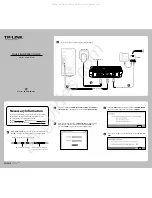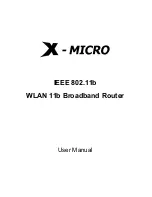
Expanding storage for EVA arrays using HP P6000 Command View
Presenting a virtual disk offers its storage to a host. To make a virtual disk available to a host, you
must present it. You can present a virtual disk to a host during or after virtual disk creation. The
virtual disk must be completely created before the host presentation can occur. If you choose host
presentation during virtual disk creation, the management agent cannot complete any other task
until that virtual disk is created and presented. Therefore, HP recommends that you wait until a
virtual disk is created before presenting it to a host.
For more information, see the HP P6000 Command View Software Suite User Guide.
Expanding storage using the Array Configuration Utility
The Array Configuration Utility enables online capacity expansion of the array and logical drive
for specific MSA storage arrays, such as the P2000. For more information, use the ACU online
help, or the procedures to “Expand Array” in the HP Array Configuration Utility User Guide.
Expand logical drive
This option in the ACU increases the storage capacity of a logical drive by adding unused space
on an array to the logical drive on the same array. The unused space is obtained either by
expanding an array or by deleting another logical drive on the same array. For more information,
use the ACU online help, or the “Extend logical drive” procedure in the HP Array Configuration
Utility User Guide.
Volume shadow copies
NOTE:
Select storage systems can be deployed in a clustered as well as a non-clustered
configuration. This chapter discusses using shadow copies in a non-clustered environment.
The Volume Shadow Copy Service provides an infrastructure for creating point-in-time snapshots
(shadow copies) of volumes. Shadow Copy supports 64 shadow copies per volume.
A shadow copy contains previous versions of the files or folders contained on a volume at a specific
point in time. While the shadow copy mechanism is managed at the server, previous versions of
files and folders are only available over the network from clients, and are seen on a per folder or
file level, and not as an entire volume.
The shadow copy feature uses data blocks. As changes are made to the file system, the Shadow
Copy Service copies the original blocks to a special cache file to maintain a consistent view of the
file at a particular point in time. Because the snapshot only contains a subset of the original blocks,
the cache file is typically smaller than the original volume. In the snapshot's original form, it takes
up no space because blocks are not moved until an update to the disk occurs.
By using shadow copies, a storage system can maintain a set of previous versions of all files on
the selected volumes. End users access the file or folder by using a separate client add-on program,
which enables them to view the file in Windows Explorer. Accessing previous versions of files, or
shadow copies, enables users to:
•
Recover files that were accidentally deleted. Previous versions can be opened and copied to
a safe location.
•
Recover from accidentally overwriting a file. A previous version of that file can be accessed.
•
Compare several versions of a file while working. Use previous versions to compare changes
between two versions of a file.
Shadow copies cannot replace the current backup, archive, or business recovery system, but they
can help to simplify restore procedures. Because a snapshot only contains a portion of the original
data blocks, shadow copies cannot protect against data loss due to media failures. However, the
strength of snapshots is the ability to instantly recover data from shadow copies, reducing the
number of times needed to restore data from tape.
38
File server management
















































